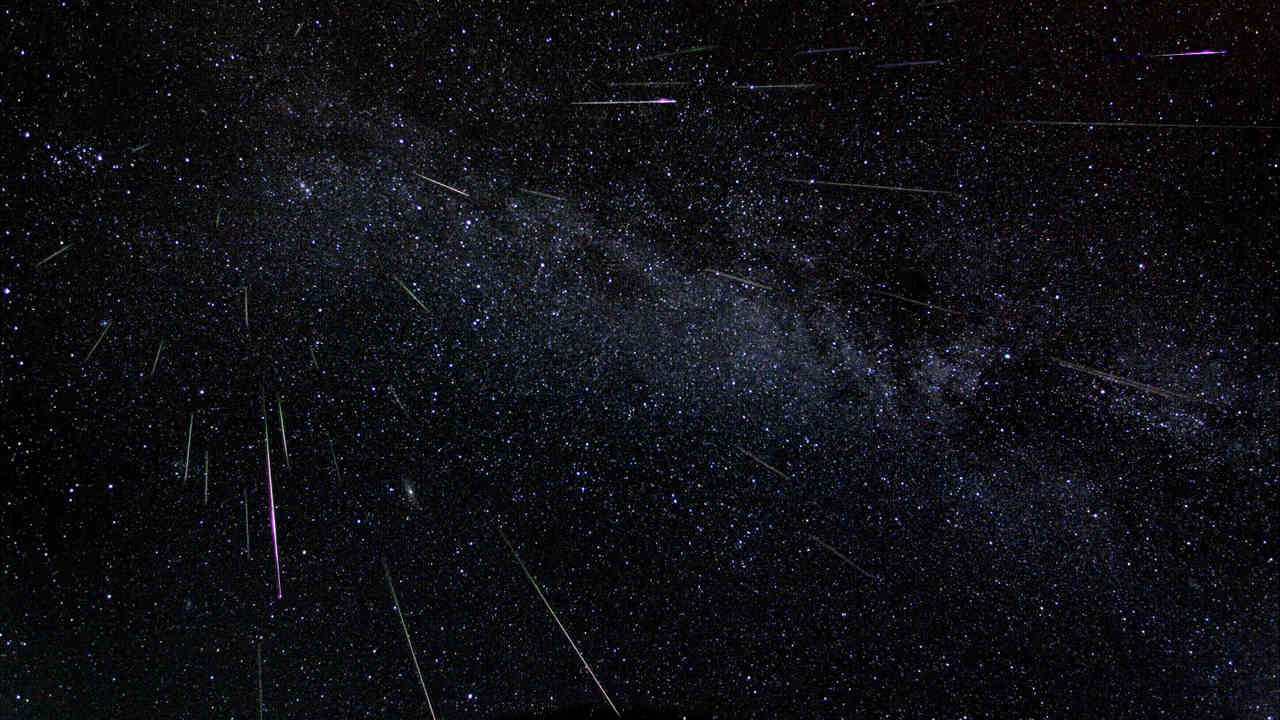
Perseids meteor shower to peak from 11-12 August: Here’s how you can catch this spectacular show in the night sky- Technology News, Firstpost

FP TrendingAug 03, 2021 08:43:42 IST
August is jam-packed with exciting celestial events and will keep sky-gazers glued to their telescopes. This month will see a meteor shower, along with a blue moon and a show by Jupiter and Saturn.
Supposed to peak by mid-August, NASA’s meteor-tracking cameras have already started spotting the first meteors from the Perseids meteor shower since 26 July.
Space enthusiasts will be able to spot them from the night of 11 August, till 12 August. Those living in the Northern Hemisphere will be able to spot over 40 Perseids an hour. Those in the Southern Hemisphere will see fewer Perseids. The Perseids will appear as quick and small streaks of light.
How meteor showers occur
NASA states that as a comet’s path brings it closer to the Sun, some of its icy surface “boils off”, releasing a lot of debris, water and gas out into space. Earth comes in contact with this debris every year as it completes its revolution around the Sun.
These meteoroids or space rocks, which are a lot smaller than asteroids, strike the Earth’s atmosphere and disintegrate in a fiery phenomenon that is commonly known as a shooting star.
When numerous meteoroids fall towards Earth at the same time, it is termed a meteor shower.
How to watch the Perseid meteors
Ideally, the Perseids are best viewed in the Northern Hemisphere during the hours just before dawn. But sometimes, people can catch them as early as 10 pm. NASA also suggests staying up late, or waking up between pre-dawn hours on the nights of 11-13 August.
The meteors will be less visible within city limits, due to higher artificial light pollution. So, a safe spot on the outskirts, where there isn’t much pollution and few to no buildings to obscure the view, is ideal.
No telescopes or binoculars are needed to observe a meteor shower. Just lie on your back for around thirty minutes to let your eyes adjust to the dark, and enjoy the fireworks!
If you cannot watch the meteor shower in real life, you can catch it online as several websites will telecast this spectacular shower live. NASA’s YouTube channel is one such place to catch a live stream of the Perseids meteor shower.
Why the Perseids are so clearly visible
Perseids occur at night during peak summer, when clear skies make for enhanced viewing. They are also one of the most ‘plentiful showers’ (with 50 to 100 meteors seen per hour), which increases the chances of sky-gazers being able to spot them during a night of meteor-gazing.
Another reason why the Perseids are brighter than other meteors are their fireballs – exceptionally bright meteors that are spectacular enough to be seen over an extremely wide area. These meteors originate from “cometary material” and are basically huge explosions that emit light and colour.
Stay connected with us on social media platform for instant update click here to join our Twitter, & Facebook
We are now on Telegram. Click here to join our channel (@TechiUpdate) and stay updated with the latest Technology headlines.
For all the latest Technology News Click Here
For the latest news and updates, follow us on Google News.

